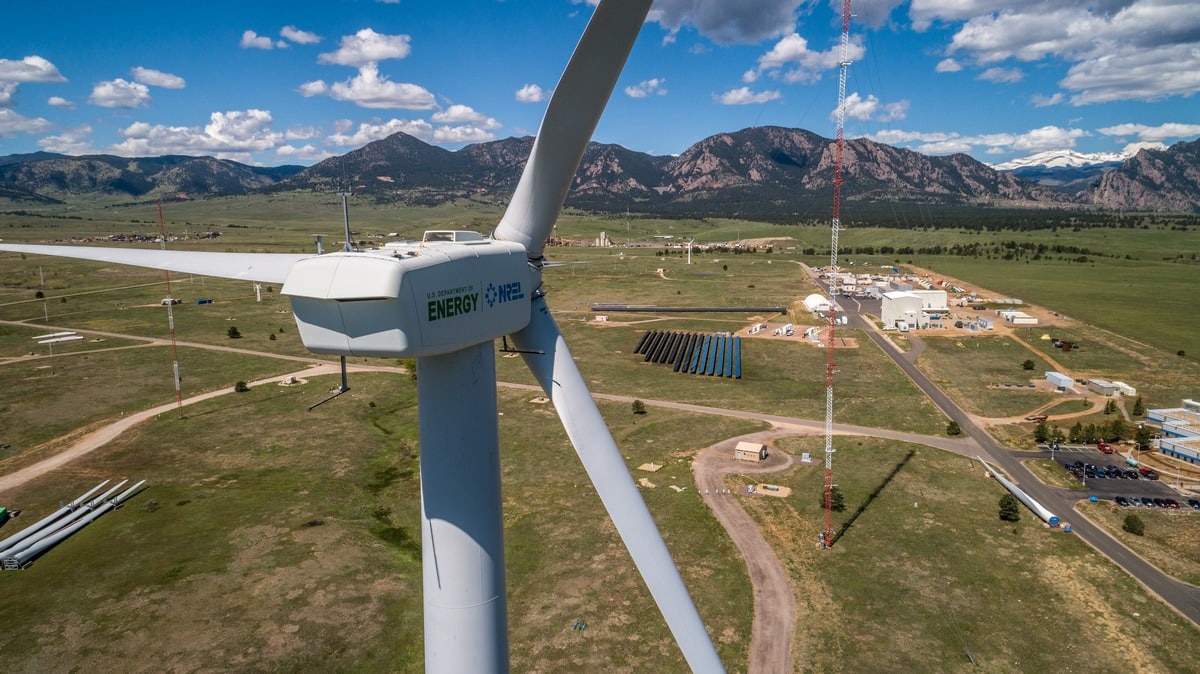
In our last post, we discussed an emerging trend of corporations and local governments taking decisive action on climate change in the absence of federal leadership. Â Since that post, several excellent examples of this commitment have been announced, with perhaps the most compelling coming from the U.S. Conference of Mayors‘ 85th annual meeting this week. Â Climate change and renewable energy were among the topics discussed at the meeting by leaders from more than 250 cities, and a number of powerful resolutions were adopted. Â The full list of resolutions is well worth a read, but there are two in particular that warrant highlighting.
First, the assembled city officials overwhelmingly adopted a resolution that set a goal for member communities to adopt 100{9d1f0b33d0dfecc7a532185a91e80dc02994fcd6e1d2f71ba6b569dea4e7d0d7} renewable energy by 2035. Â Tellingly, only two mayors recorded votes in opposition to this resolution.
Second, the assembled officials adopted a motion in support of both onshore and offshore wind energy generally, and for extension of the federal Investment Tax Credit more specifically.
The text of both of these resolutions are set forth in full below. Â Though largely symbolic, these resolutions highlight a very real ground swell of support for renewable energy, energy efficiency and strong but fair environmental policy in local communities across the country. Â These commitments are seen in both red and blue states, because they are founded upon a recognition that these policies create jobs, promote local economies, and help protect the health, welfare and safety of local citizens. Â I’m proud that Mayor, Sly James of Kansas City, was among those that supported these excellent resolutions.

100{9d1f0b33d0dfecc7a532185a91e80dc02994fcd6e1d2f71ba6b569dea4e7d0d7} Renewable Energy in American Cities
WHEREAS, renewable energy represents an enormous economic opportunity for our nation and our nation’s cities to create jobs in an emerging industry, increase economic security, expand prosperity for local residents, reduce air pollution and associated public health risks, reduce the strain on water resources, save consumers money, and address environmental justice challenges in communities; and
WHEREAS, “renewable energy� includes energy derived from wind, solar, geothermal, and wave technology; and
WHEREAS, some forms of biomass may be considered “renewable energy� after being evaluated for sustainability and environmental justice implications; and
WHEREAS, “renewable energy� specifically excludes energy derived from fossil fuels, nuclear, incineration of municipal and medical waste, and any large-scale future hydroelectric development; and
WHEREAS, the transition to renewable energy will improve air and water quality and protect the health of our families, particularly the most vulnerable across our communities; and
WHEREAS, according to the Department of Energy, the cost of wind power is down 41 percent since 2008 and solar costs are down between 54 percent and 64 percent in that same period; and
WHEREAS, more than twenty-five U.S. cities, including Columbia, SC, San Diego, CA, Salt Lake City, UT, and San Jose, CA have already adopted ambitious 100 percent clean, renewable energy goals, and six U.S. Cities, including Aspen, CO, Burlington, VT, Greensburg, KS, Kodiak Island, AK, and Rock Port, MO have already hit their targets to generate 100 percent of the energy used community-wide from clean, non-polluting and renewable sources; and
WHEREAS, individuals, families, businesses, and institutions throughout the nation seek greater energy freedom through the expansion of local and distributed energy resources like photovoltaic solar and electric vehicles; and
WHEREAS, rooftop solar, low-income community solar, energy efficiency, and demand control technologies offer the opportunity to equitably distribute resources, address poverty, stimulate new economic activity in our nation’s cities, and lift up those most impacted by high energy costs; and
WHEREAS, actions by local government and businesses are already a significant driver of renewable energy growth and can put the country on track to meet its commitment to the Paris Agreement under the United Nations Framework Convention on Climate Change,
NOW, THEREFORE, BE IT RESOLVED, that The United States Conference of Mayors supports cities establishing a community-wide target of powering their communities with 100 percent clean, renewable energy by 2035; and
BE IT FURTHER RESOLVED, that The United States Conference of Mayors proclaims its commitment to equity, affordability, public participation, and access for all people in America as cities pursue this transition to 100{9d1f0b33d0dfecc7a532185a91e80dc02994fcd6e1d2f71ba6b569dea4e7d0d7} clean, renewable energy; and
BE IT FURTHER RESOLVED, that priority should be given to the lowest cost measures to meet energy needs including efficiency, weatherization, cogeneration, district heating and cooling, decentralized electricity generation and smart grids/micro grids, the use of industrial waste heat, building controls, automated lighting, solar-powered hot water heaters and programs that create an energy-saving culture in our nation’s cities; and
BE IT FURTHER RESOLVED, that given the economic development, job creation, and job training potential of clean, renewable energy, the transition to 100{9d1f0b33d0dfecc7a532185a91e80dc02994fcd6e1d2f71ba6b569dea4e7d0d7} clean, renewable energy should include structured mechanisms to include low-income citizens in the benefits to be derived from the transition, including creating quality careers adhering to local source hiring, a just transition for workers displaced by fossil fuel reduction, equitable access through ownership and benefits to create new opportunity for historically marginalized communities, and affordable clean energy options.
Supporting Onshore and Offshore Wind Energy Production
WHEREAS, wind energy can help the nation reduce its greenhouse gas emissions, diversify its energy supply, provide cost�competitive electricity, and stimulate revitalization of key sectors of the economy by investing in infrastructure and creating skilled jobs; and
WHEREAS, according to the U.S. Department of Energy wind accounted for 31{9d1f0b33d0dfecc7a532185a91e80dc02994fcd6e1d2f71ba6b569dea4e7d0d7} of all new generation capacity installed in the U.S. from 2008 through 2014; and
WHEREAS, this metric is proof that the renewable energy sector is capable of boosting economic growth while enhancing our energy supply; and
WHEREAS, when it comes to America’s energy future, we should be doing everything we can to generate as much of our power from domestic sources as possible; and
WHEREAS, America needs a secure and diverse supply of home-grown energy resources to power the nation and to create high skilled jobs; and
WHEREAS, despite this booming expansion of onshore renewable energy facilities, the United States still lags industrialized countries when it comes to development of an offshore wind industry; and
WHEREAS, America’s costal cities, with their complex infrastructure, are major consumers of power; and
WHEREAS,  America’s cities need new sources of job growth to reduce high unemployment rates that persist in many of the nation’s urban areas; and
WHEREAS, the Bush and Obama Admiistrations alike expressed their intention to close the gap in offshore wind capacity and took proactive steps in faurtherance of this objective, including a robust permitting system to make land on the outer continental shelf  available for offshore wind development; and
WHEREAS, the development of the wind energy industry including, the offshore wind energy industry, has great potential to become a new sector that can add billions of dollars to the U.S. economy and create tens of thousands of high-skilled jobs that cannot be outsourced overseas; and
WHEREAS, wind energy is developing an impressive record of job creation, and the majority of wind turbines installed in the U.S. last several years were built in the U.S.; and
WHEREAS, in Northern Europe, there are more than eighty active offshore wind farms that supply electricity to millions and have created tens of thousands of jobs; and
WHEREAS,  in May of this year, Senators Edward J. Markey and Sheldon Whitehouse, along with Congressman Jim Langevin, introduced the Offshore Wind Industries for New Development Act (the “Offshore WIND Act”), which would extend the Investment Tax Credit (“ITC”) through 2025, a measure that would hasten the development of the offshore wind industry by helping to defray the significant upfront capital costs of wind farm development; and
NOW, THEREFORE, BE IT RESOLVED, that The United States Conference of Mayors supports greater federal, state and local investment in the development of wind energy; and
BE IT FURTHER RESOLVED, that The United States Conference of Mayors supports a continuation of the ITC for as long as necessary to secure the long-term viability of the domestic wind energy industry, including the offshore wind energy industry, and more specifically, the passage of the Offshore Wind Act.
SOURCE: Renewable Energy Law Insider – Read entire story here.







